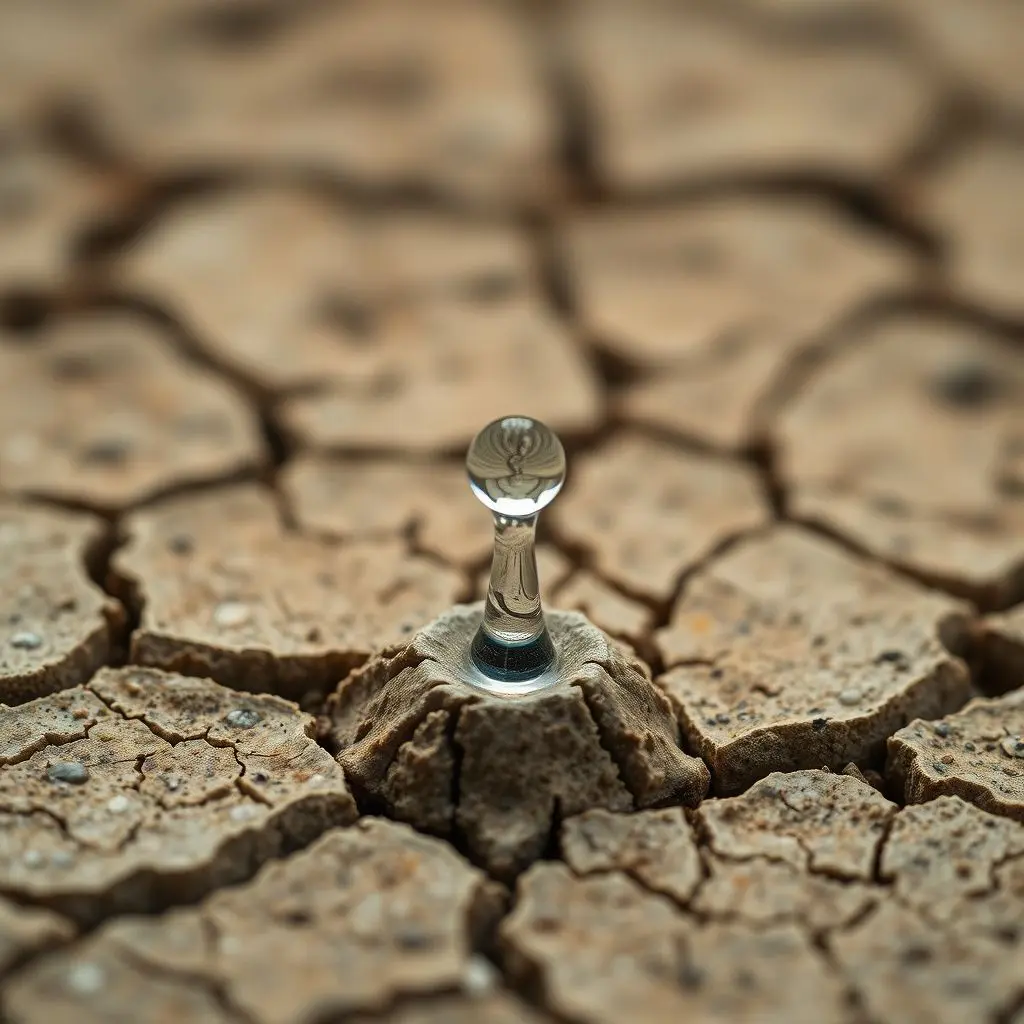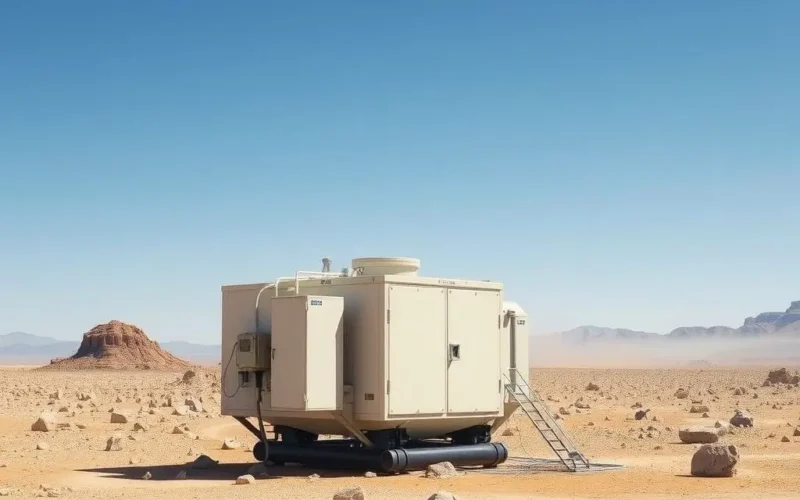Picture this: shimmering, crystal-clear water appearing seemingly out of thin air, even in the most parched corners of the globe. Sounds like something from a sci-fi flick or a desert mirage, right? Yet, this isn’t a futuristic dream or an illusion. Welcome to the fascinating reality of harvesting water directly from the atmosphere.
In regions where rivers have run dry, wells have become dust pits, and rain is a distant memory, accessing fresh water is an existential challenge. Traditional sources are scarce or non-existent, leaving communities vulnerable to drought and pushing the boundaries of survival.
Table of Contents
The Challenge: Thirsty Lands and Scarce Water
Arid and semi-arid regions, covering a significant portion of the Earth’s landmass, face chronic water scarcity. Climate change exacerbates these conditions, leading to more prolonged and intense droughts. Millions of people live in these areas, struggling to find enough water for drinking, sanitation, and agriculture. Relying on dwindling groundwater or expensive, energy-intensive desalination plants isn’t always feasible or sustainable for remote or impoverished communities.
A truly transformative solution is needed—one that is local, relatively independent of existing infrastructure, and taps into an omnipresent, though often invisible, resource: the moisture held within the air around us.
Curious to see this concept in action? Here’s a quick peek into the incredible world of atmospheric water generation:
The Solution: Atmospheric Water Generation (AWG)
This is where Atmospheric Water Generation (AWG) technology steps in. Far from magic, it’s a sophisticated blend of engineering and physics designed to capture the invisible water vapor present in the air, condense it back into liquid water, and purify it into safe, potable water.
Think of it as creating a micro-rain shower on demand, powered by technology. While the amount of water vapor in the air fluctuates based on location, temperature, and humidity, the atmosphere collectively holds a staggering amount of fresh water—estimated to be six times more than all the world’s rivers combined! AWG technology aims to harness a tiny fraction of this vast, renewable reservoir.

How Does Atmospheric Water Generation Work?
AWG systems primarily operate on two core principles:
1. Condensation (Cooling the Air)
This is the most common method and is similar in principle to how a dehumidifier works or how dew forms on a cold surface. AWG machines using this method draw air into the system and cool it down to its dew point—the temperature at which water vapor turns into liquid water. This is typically achieved using refrigeration technology.
- Process:
- Air Intake: Fans pull ambient air into the unit.
- Cooling: The air passes over cooled coils (refrigerated surfaces).
- Condensation: As the air cools, the water vapor condenses into liquid droplets on the coils.
- Collection: The condensed water drips down into a collection tank.
- Purification: The collected water undergoes filtration (like activated carbon, UV sterilization, or reverse osmosis) to remove impurities, dust, and microorganisms, making it safe to drink.
This method is most efficient in environments with higher relative humidity and warmer temperatures, as there is more water vapor available in the air to condense.
2. Adsorption/Absorption (Using Desiccants)
This method is particularly promising for extremely arid regions with lower humidity levels. It involves using special materials, called desiccants (like silica gel, zeolites, or metal-organic frameworks – MOFs), that have a high affinity for water molecules.
- Process:
- Adsorption: Air passes over the desiccant material, which absorbs or adsorbs the water vapor from the air, even at low humidity.
- Extraction (Release): Once the material is saturated with water, it is heated (often using solar energy or waste heat) to release the captured water vapor.
- Condensation: The released water vapor is then cooled and condensed into liquid water.
- Purification: Similar to the condensation method, the water is filtered to ensure purity.
This desiccant-based approach can work effectively in humidity levels as low as 10-15%, making it suitable for true desert climates where condensation-based systems would struggle.
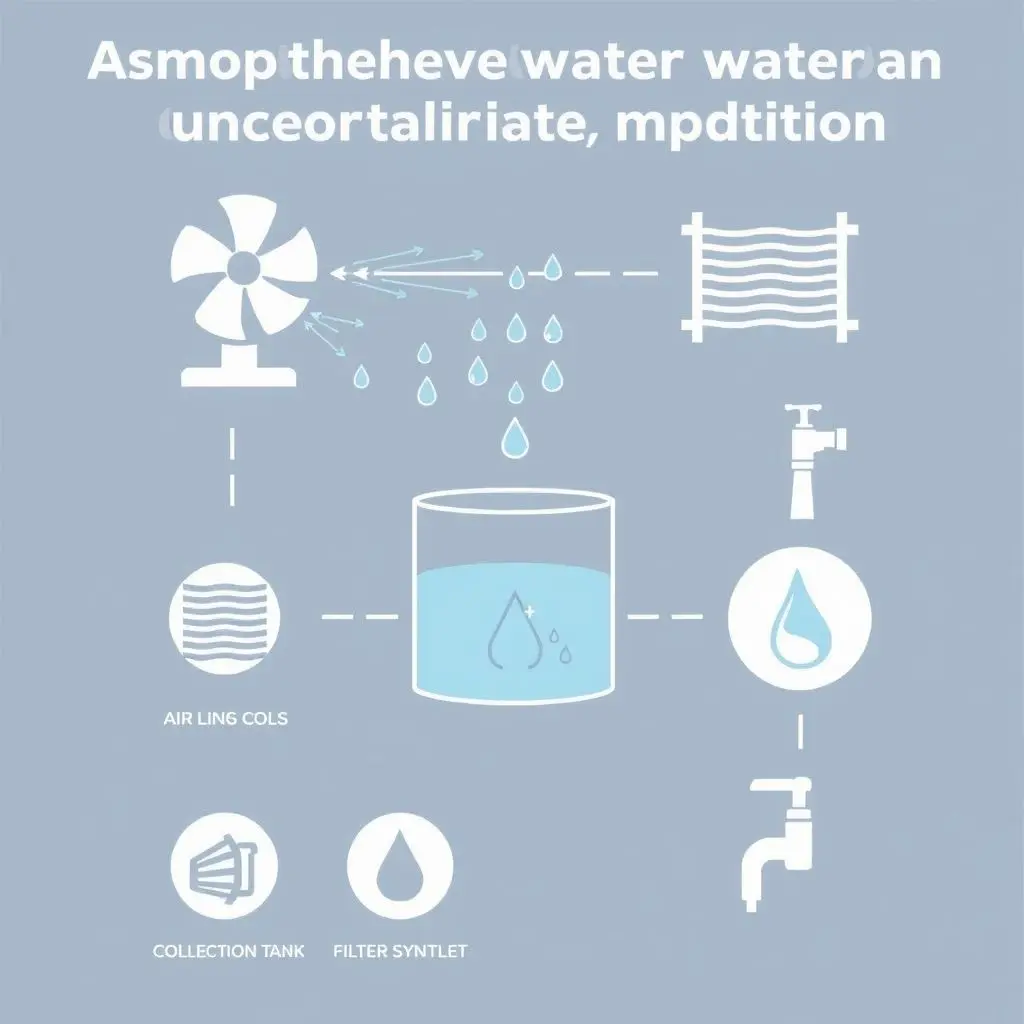
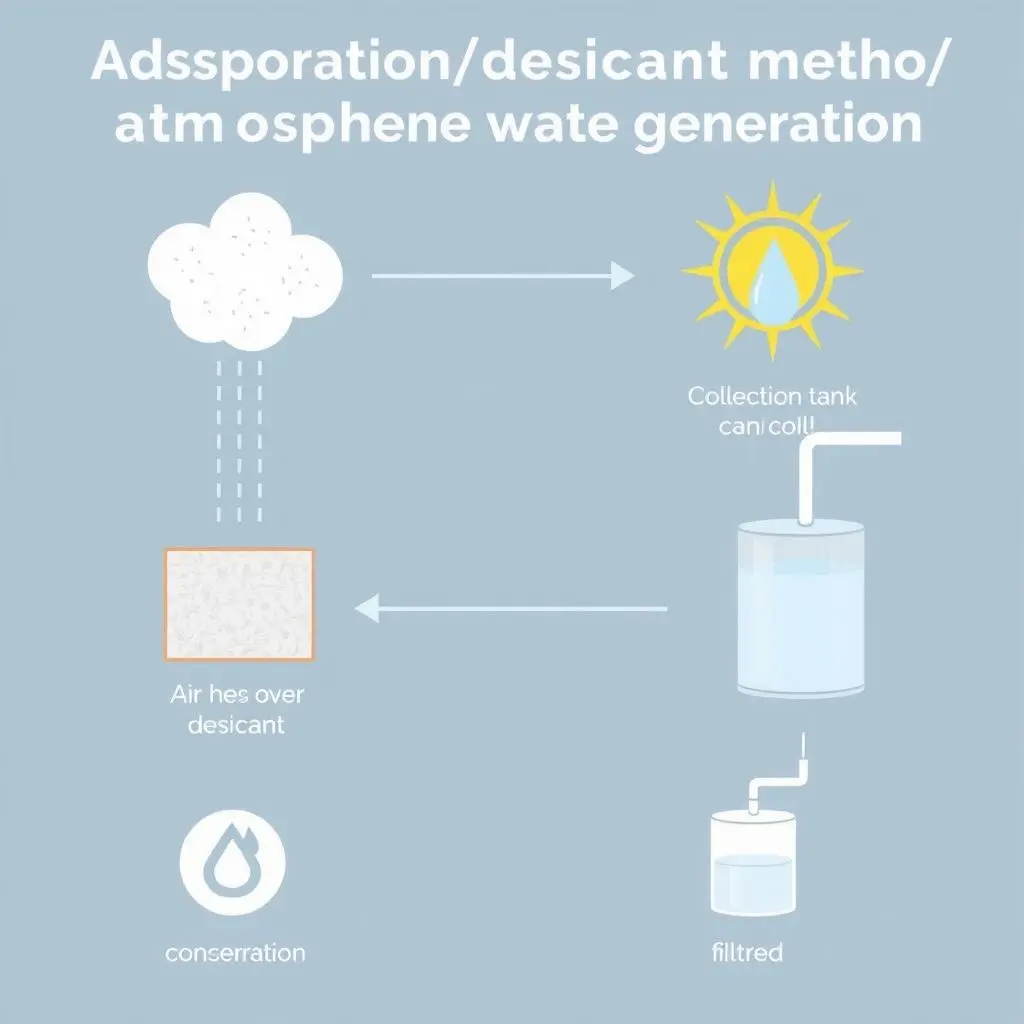
Advantages of AWG for Arid Regions
For communities grappling with water scarcity in dry climates, AWG offers significant benefits:
- Decentralized Source: AWG units can be deployed virtually anywhere, independent of pipelines, rivers, or groundwater. This is crucial for remote or off-grid locations.
- Sustainable and Renewable: It taps into the Earth’s natural atmospheric water cycle, a continuously replenished source.
- Local Production: Water is generated exactly where it is needed, eliminating the need for expensive and complex transportation infrastructure.
- High Water Quality: The generated water is typically very pure before filtration, as it comes from vapor. Filtration steps ensure it’s safe for drinking, often surpassing local tap water quality.
- Scalability: Systems range from small, home-sized units to large-scale generators capable of producing thousands of liters per day.
Challenges and Limitations
While promising, AWG technology isn’t without its hurdles, particularly concerning efficiency and cost:
- Energy Consumption: Both condensation and desiccant methods require significant energy, primarily for cooling (condensation) or heating (desiccant regeneration). This can be a major operational cost.
- Dependence on Conditions: Performance is heavily reliant on ambient temperature and relative humidity. Condensation systems are less effective in low humidity, while desiccant systems require heat energy for regeneration.
- Cost: Initial investment in AWG units can be high compared to traditional water access methods (if available). Operational costs, mainly energy, can also be substantial.
- Maintenance: Filters need regular replacement, and the systems require maintenance to ensure optimal performance and water quality.
Many researchers and companies are actively working to improve energy efficiency, reduce costs, and develop materials that work better in diverse atmospheric conditions. Integration with renewable energy sources like solar power is a key area of focus to make AWG more sustainable and affordable in sunny, arid locations.
Real-World Applications and the Future
AWG technology is already being deployed in various scenarios:
- Providing drinking water in drought-stricken communities.
- Supplying military operations in remote locations.
- Offering emergency water during disaster relief efforts.
- Potentially providing water for small-scale agriculture or livestock in arid zones.
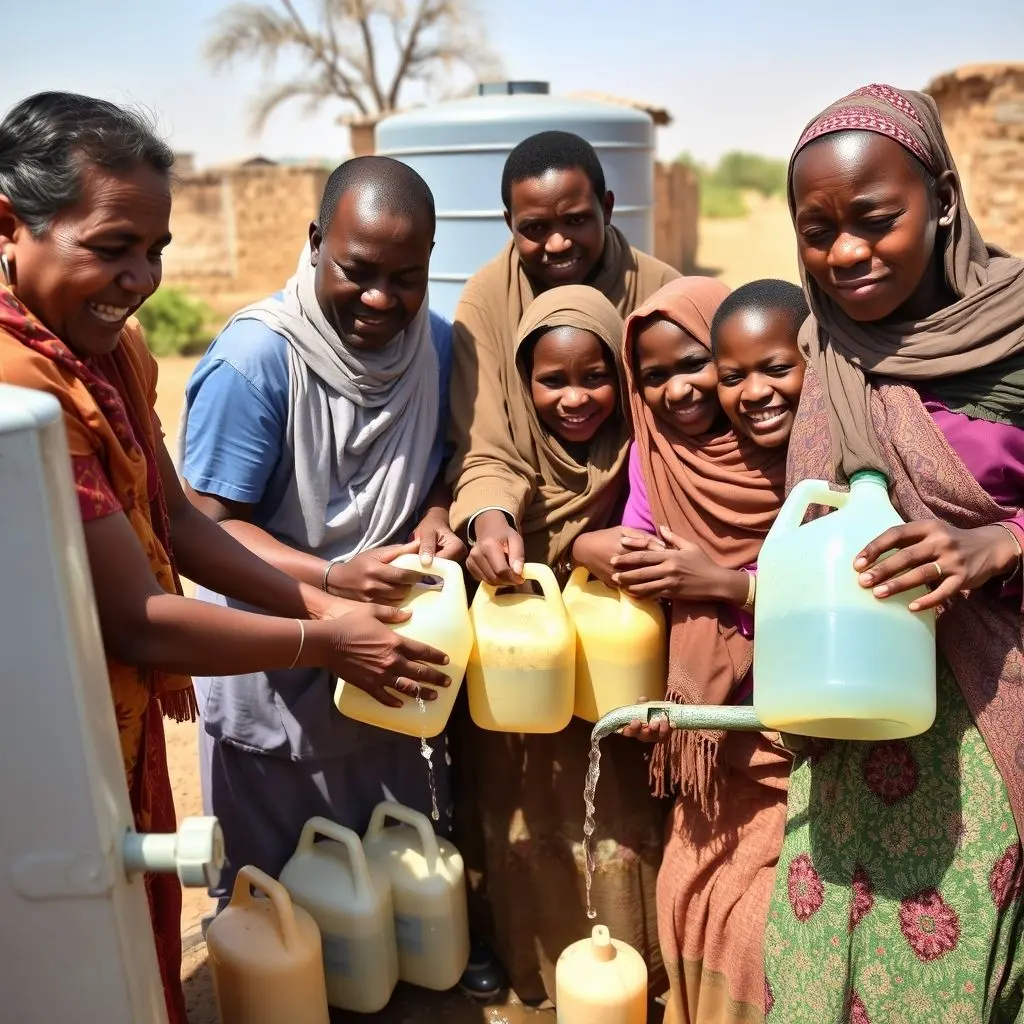
The future of AWG looks increasingly bright as technology advances. We can expect to see more energy-efficient designs, lower manufacturing costs, and broader applicability across different climates. As water scarcity intensifies globally, harnessing the moisture in the air will likely become an indispensable part of our water management strategy, especially in the most challenging arid environments.
Frequently Asked Questions (FAQs)
Q: How much water can an AWG machine produce?
A: Production varies greatly depending on the size of the unit, the technology used (condensation vs. desiccant), and environmental conditions (temperature and humidity). Small home units might produce 10-30 liters per day, while large industrial systems or arrays can generate thousands of liters daily.
Q: Does it matter how humid it is for AWG to work?
A: Yes, absolutely. Condensation-based systems work best in high humidity (ideally above 50% RH) and warmer temperatures. Desiccant-based systems can work in lower humidity (down to 10-15% RH) but require energy for heating the desiccant.
Q: Is the water produced by AWG safe to drink?
A: Yes. AWG systems include multi-stage filtration and purification processes (like activated carbon, UV light, and sometimes reverse osmosis) to remove airborne particles, microbes, and other contaminants, ensuring the water meets or exceeds drinking water standards.
Q: How does AWG compare to desalination?
A: Desalination removes salt from seawater or brackish water and is usually located near the coast. AWG extracts moisture from the air and can be deployed inland, far from the sea. Both are energy-intensive, but AWG doesn’t produce a brine waste stream like desalination, making it potentially more environmentally friendly in that regard.
Q: Is AWG a viable solution for large-scale agriculture?
A: Currently, the energy requirements and production volume per unit make large-scale agricultural irrigation challenging compared to traditional sources (when available). However, smaller-scale or high-value crop applications, or integration with highly efficient irrigation methods, might become feasible as the technology improves and costs decrease.
Tapping Into an Invisible Ocean
Accessing water from the air is more than just a technological marvel; it’s a beacon of hope for communities struggling at the forefront of climate change and water scarcity. By transforming vapor into vital liquid, atmospheric water generation technology is quite literally reshaping the landscape of water access in arid regions. As innovation continues to drive down costs and improve efficiency, these machines hold the promise of providing a sustainable, local, and reliable water source, turning the dream of plentiful water in dry lands into a tangible reality. The future of water in the world’s driest places might just be floating right above our heads.
